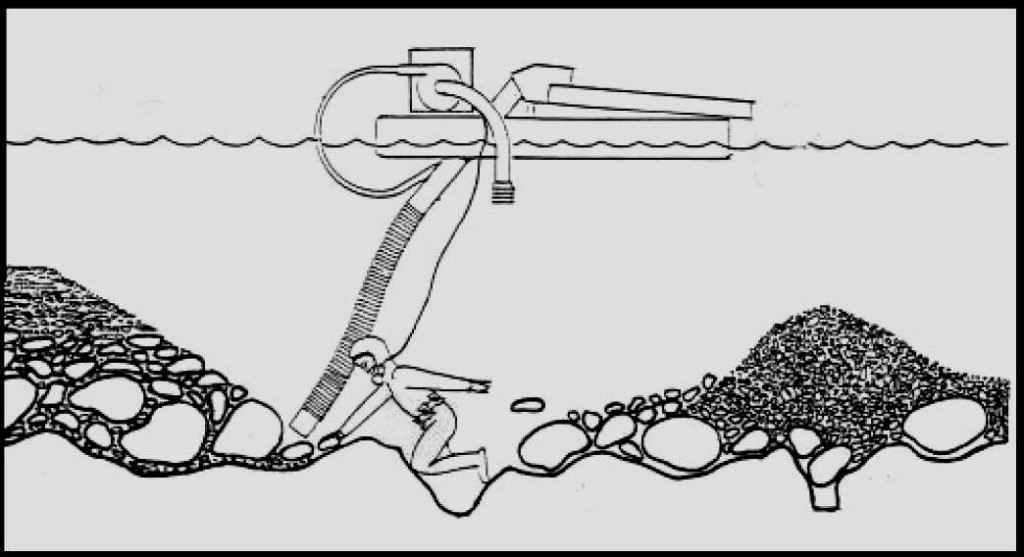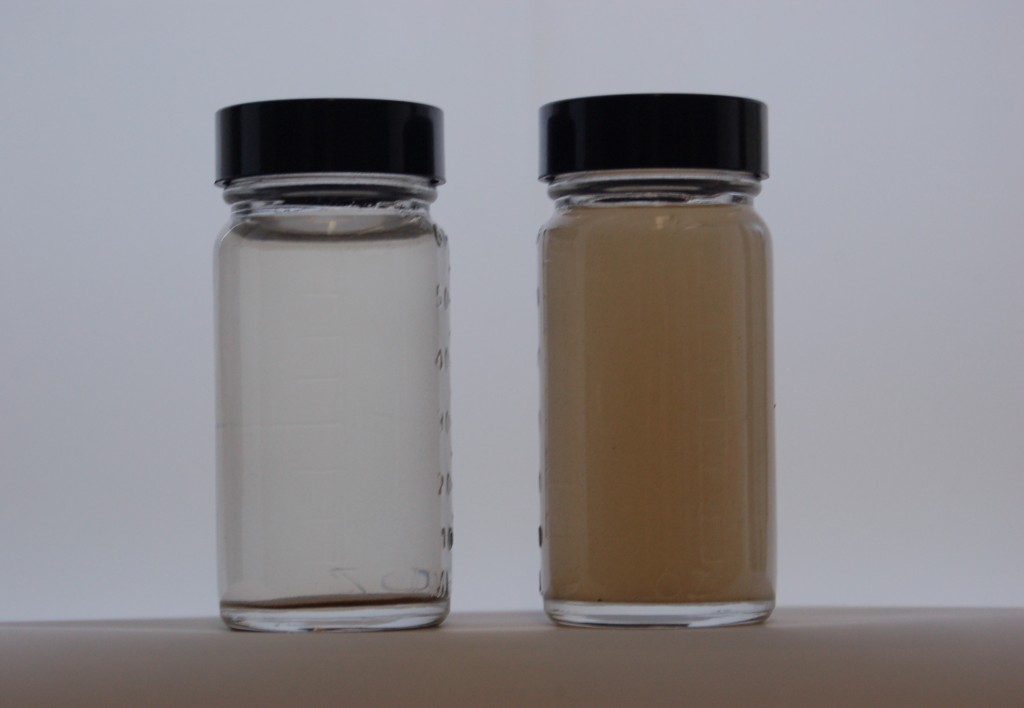
Small-Scale Gold Suction Dredging
A suction dredge is a vacuum cleaner that sucks gravel, sand and sediment (less than 4-inches in diameter) from the river bottom. This material is passed over a sluice box which captures all the heavy materials while allowing the lighter material to pass through and return to the river a few feet downstream of the dredge.
Small-scale gold suction dredging is the most environmentally friendly best management practice for removing gold and wastes found in rivers and streams. Suction dredging within the normal high water mark of a river channel does not add a pollutant to the water system. Because the miners and prospectors are in the river channel, they can’t add anything that isn’t already there.
U. S. Supreme Court Justice Sandra Day O’Connor’s majority opinion rendered in the South Florida Water Management District v. Miccosukee Tribe of Indians et al. tends to support the miner’s position that turbidity is not a pollutant added to a waterway. The Chief Justice likened a water system to a pot of soup. She reasoned that, “If one takes a ladle of soup from a pot, lifts it above the pot, and pours the soup back into the pot, one has not ‘added’ anything else to the pot.” What is turbidity? It is a cloud of fine sediment that develops behind the sluice box with the falling rocks, sand and gravel. The photograph below was provided by the Karuk Tribe and was intended to illustrate how bad turbidity is to the environment. Actually this photo shows that the sediment cloud is quickly clearing and as it leaves the right side of the photograph.
Small-scale gold suction dredging occurs for only 3-4 months each year. The dredging season is adjusted so that no fish redds (egg nests) or sensitive live stages are left in the river gravels.
To illustrate just how insignificant the impact of turbidity on the environment is let’s look at two photographs. The photo on the left was at taken at flood stage on the Klamath River. Turbidity was 656 NTU. The photo on the right is the same water that had been shaken, dispensed and allowed to settle over night. The vial on the right shows what the turbidity looked like in the river while the vial on the left is the same concentration of sediments that were not re-suspended. This is the time of year when the salmon have spawned and the fish redds are in the stream bottoms. H.B. Ward explained why fish survive in this environment. He said, “Mining debris is chemically inert, makes no oxygen demand on the stream and therefore takes away from the flowing water nothing which the fish require. This is equally true of this material whether placed in transit by nature or by man since the products are alike in nature and comes from the same sources
Small scale miners remove large quantities of waste materials from their work sites. For example, the sluice box full of lead was just a portion of the 11 pounds removed from the Lewis River in Washington State. The gold pan to the right contains fishing lead weights, lures, leader, and hooks. The knife was also dredged up from Quartzville Creek, Oregon
A significantly worst example of river pollution is shown in the photographs below. It is clear that this waste is not the result of small scale mining. In these photographs you can see golf balls, hats shoes, plastic bottles, sunglasses, paddles, etc. All of this trash was removed from of ONE (1) dredge site during a summer season on the South Fork of the American River. The American River is popular for rafting trips, however, if a miner owned a gold claim and all this waste ended up on his claim, who do you suppose will be blamed for trashing the environment?
The right for small-scale gold suction dredge miners to mine in Oregon is under attack by radical environmental organizations and Oregon State Agencies like the Department of Environmental Quality and the Department of State Lands. Millions of dollars worth of published science and environmental impact reports have been provided to these State agencies and all Oregon State legislators. The published science strongly supports the conclusion the impact of small-scale gold mining on the environment is less than significant. Environmental Impact Reports that all reached this same conclusion were published by the California Department of Fish and Wildlife 1994 and 2012 (the 2012 EIR cost $1.5 million), Wallowa-Whitman National Forest, OR, 2012, Nez Perce National Forest, ID, 2004, Chugach National Forest, AK, 1992, U.S. Environmental Protection Agency, 1999 and 2011, Siskiyou National Forest, OR, 2001 and 2003 and the Clearwater National Forest, ID, 2004.
It is unfortunate that rafters and fishermen have joined with the radical environmental left to attack this small mining industry. When one evaluates the effects of small-scale gold suction dredging on the environment one must not ignore the effect of scale. Two thousand, or less, suction dredge miners operating on thousands of miles of Oregon’s rivers would have a minimal impact. For example Data from the Oregon Watershed Enhancement Board and an assumption that there were 2000 suction dredge miners operating in Oregon waters, during the in-water-work-period, resulted in an estimated <0.0064-percent of Oregon waterways being impacted by small-scale gold suction dredging; and, to further refine these data it was assumed that all 2000 small-scale gold suction dredge miners moved into the upper Rogue River Basin to work. This calculation estimated that <0.67-percent of the linear area of waterway would be impacted by small-scale gold suction dredging. This is a clear example of the effect of scale that is always ignored by these “not-in-my-backyard” opponents to anything not within their own personal interests.
Benificial factors of small-scale dredging are that fish survival improves under turbid conditions, holes create safe habitat for fish, Dredge tailings protect established redds by offering additional spawning substrate in areas of limited natural substrate, Pools created by abandoned dredger sites can provide holding and resting areas for juvenile and adult salmonids, and dredgers contribute an average $13,797 per miner into Oregon’s economy.










Great job as usual Joe in pointing out the facts about how dredging actually HELPS the environment in general and the fish in particular!